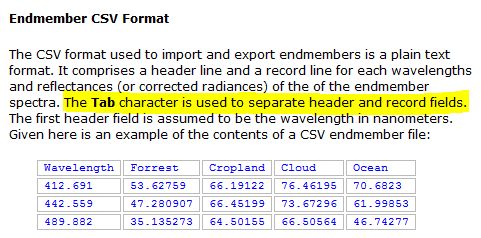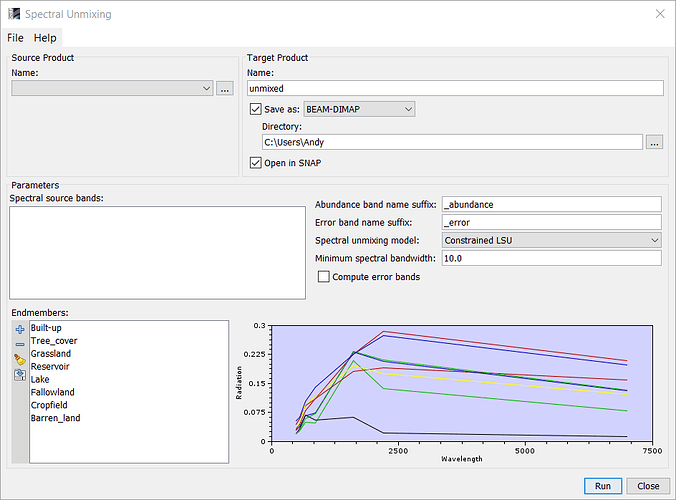as stated in the help, the table should be tab-delimited instead of commas. I changed it for you. It can be done in Notepad++, for example, by replacing , by \t
snap2_endmembers.csv (634 Bytes)
Should work now - I am interested in the results because I think the spectral unmixing tool has great potential.

